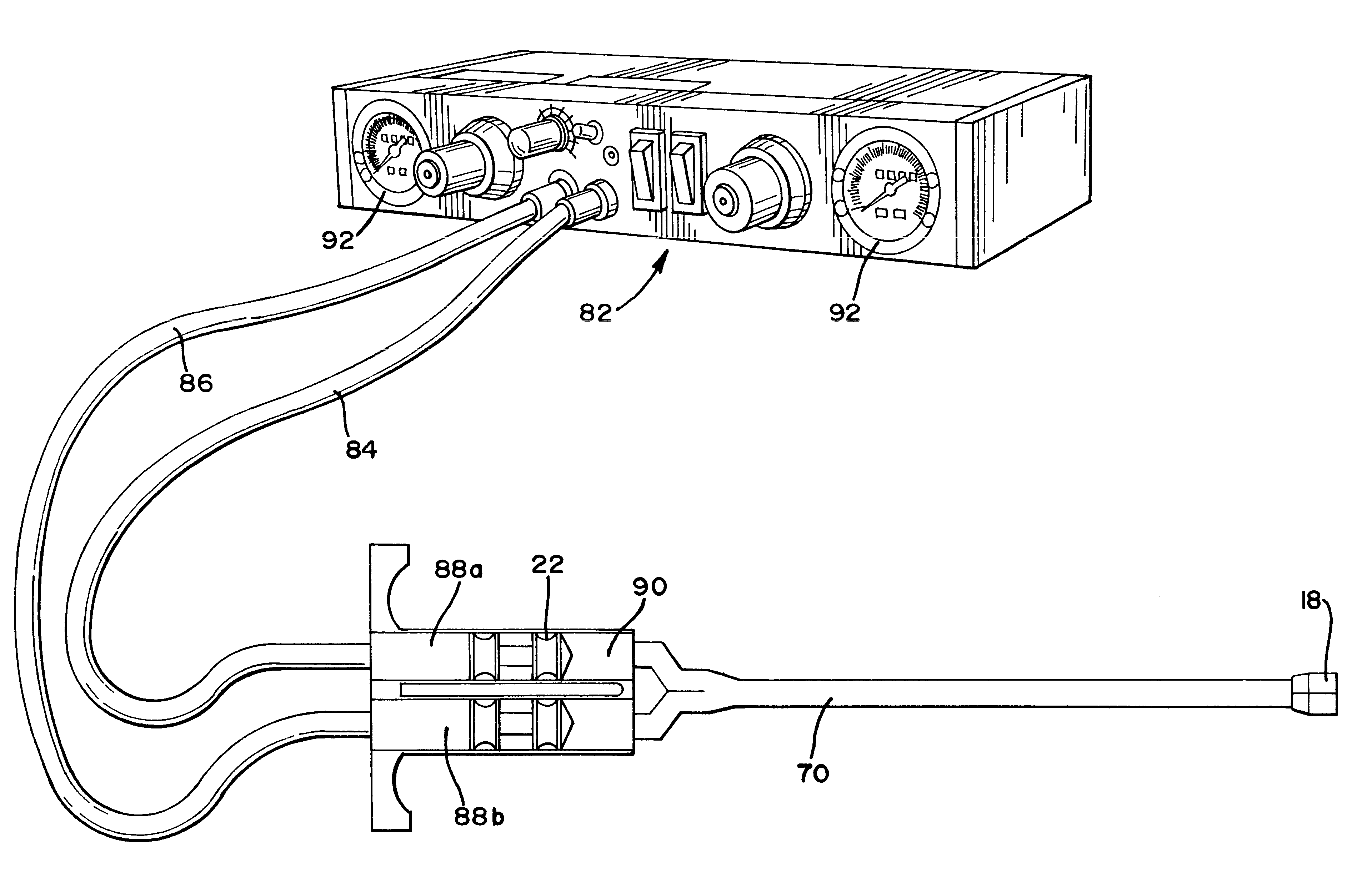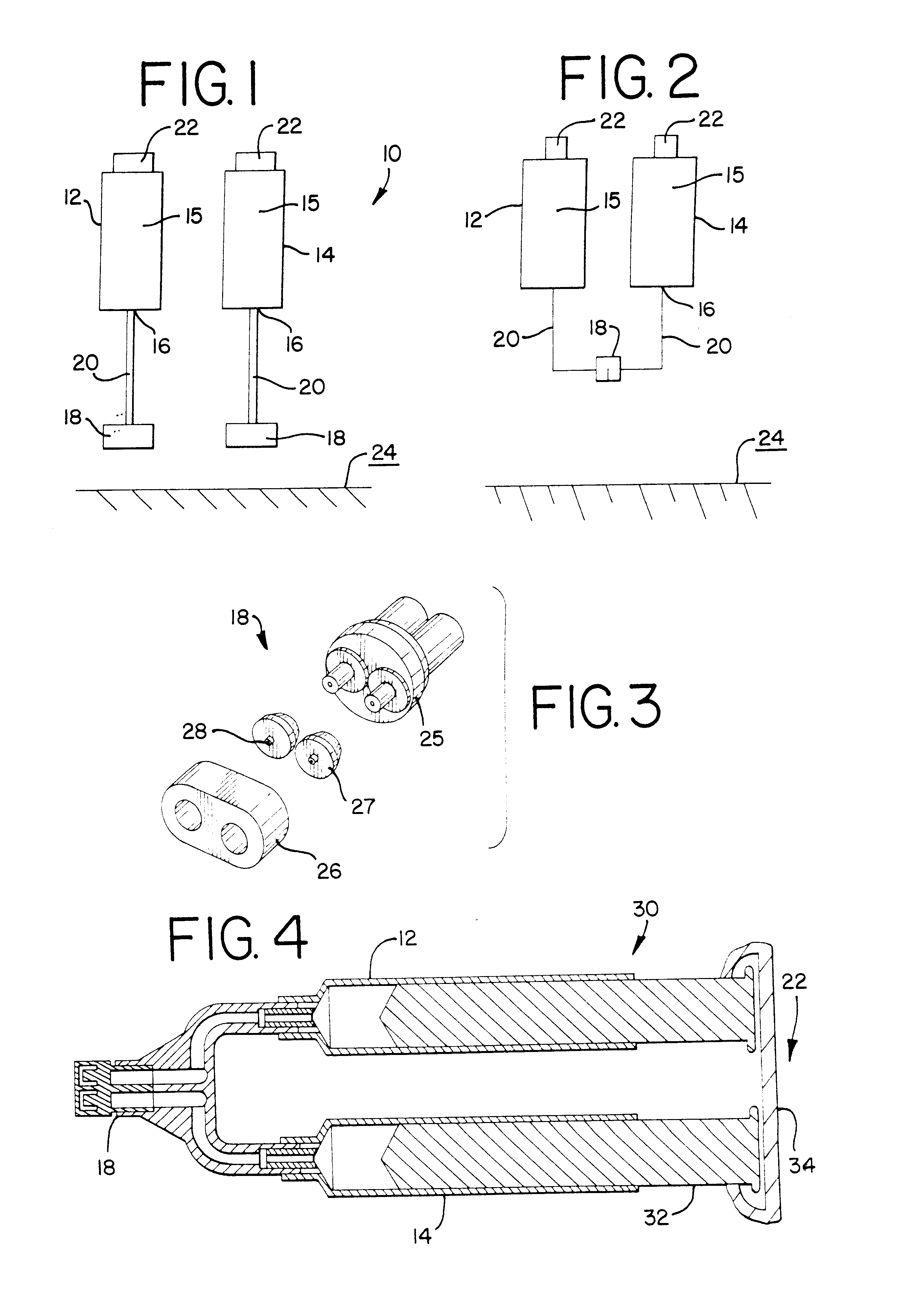Fibrin delivery device and method for forming fibrin on a surface
a delivery device and fibrin technology, applied in the field of fibrin delivery devices and methods for forming fibrin on surfaces, can solve the problems of avoiding post-operative adhesions, avoiding the risk of forming additional adhesions, and fibrin glues not being widely used for anti-adhesion purposes, etc., to achieve prevent formation of adhesions, facilitate handling, and high mechanical strength
- Summary
- Abstract
- Description
- Claims
- Application Information
AI Technical Summary
Benefits of technology
Problems solved by technology
Method used
Image
Examples
example 1
Preparation of a Fibrin Film Using a Dual Syringe Device
The fibrin films were casted by using a commercial dual syringe device, not of the present invention, after reconstitution of the vials of a commercial fibrin glue kit in accordance with the information in the instruction leaflet of the respective kit employed. By way of example, a two-component fibrin glue kit comprising the following constituents may be used:
Vial (1) Human Topical Fibrinogen Complex (Dry Concentrate)
Vial (2) Sterile Water (3.5 ml) for Reconstituting the Content of vial (1) at 37.degree. C. in a water bath
Vial (3) Human thrombin
Vial (4) 35-45 mM CaCl.sub.2 (3.5 ml) for Reconstituting the Content of Vial (3) at Room Temperature
After reconstitution, the fibrinogen-containing solution was kept at room temperature. Further thrombin dilutions were made with 20 mM CaCl.sub.2 as diluent. Using the dual syringe device, not of the present invention, the mixture "Fibrinogen-Thrombin" was applied to a petri dish, while c...
example 2
Preparation of a Fibrin Film Using a Dry Fibrinogen Sheet
The solutions given in Example 1 were used with the following modifications.
3.5 ml of the reconstituted fibrinogen-containing solution were poured in a petri dish of 51 mm diameter which was tilted to spread the material all over the entire surface. The water contained. in the fibrinogen-containing solution was evaporated by air drying. Thus, a dry fibrinogen sheet having a thickness of 100 .mu.m and a weight of 0.4291 g was obtained. 3.5 ml of a reconstituted thrombin-containing solution were poured into the petri dish containing the dry, sheet-like fibrinogen material. The reaction mixture was then kept at 37.degree. C. for 2 hours. The fibrin film thus obtained may either directly be used or be dried and rehydrated before use. Alternatively, the dry, sheet-like fibrinogen material may be converted into a fibrin film only before use.
Both the dry, sheet-like fibrinogen material and the dried fibrin film may be included in a c...
example 3
Preparation of a Fibrin Sealant / Glue
The preparation of a fibrin glue was performed as per the technical information of the instruction leaflet provided with the kit employed. The fibrin glue was prepared extemporaneously at different concentrations of thrombin, e.g. 4, 5, 20, 100, 150, and 300 IU / ml and used as described hereinbelow.
PUM
 Login to View More
Login to View More Abstract
Description
Claims
Application Information
 Login to View More
Login to View More - R&D
- Intellectual Property
- Life Sciences
- Materials
- Tech Scout
- Unparalleled Data Quality
- Higher Quality Content
- 60% Fewer Hallucinations
Browse by: Latest US Patents, China's latest patents, Technical Efficacy Thesaurus, Application Domain, Technology Topic, Popular Technical Reports.
© 2025 PatSnap. All rights reserved.Legal|Privacy policy|Modern Slavery Act Transparency Statement|Sitemap|About US| Contact US: help@patsnap.com



